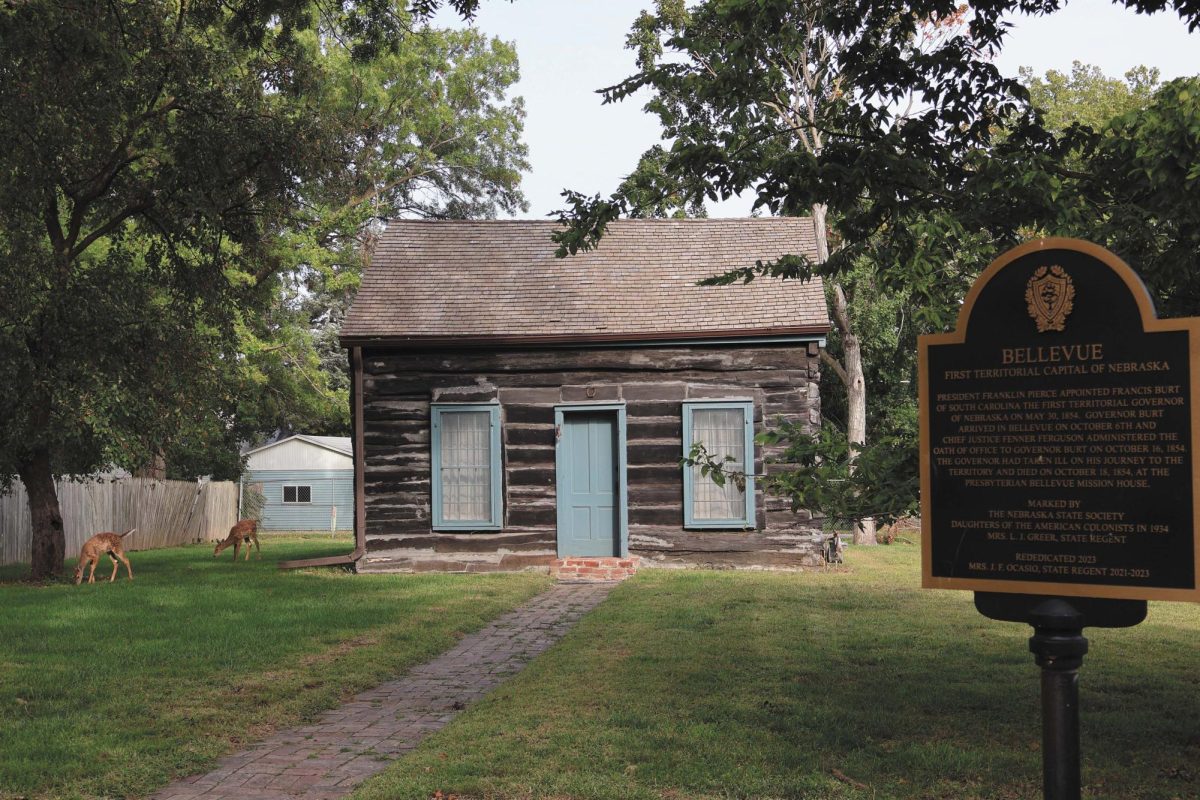In 1822, Bellevue was nothing more than a fur trading post situated along the Missouri River. The land was covered in wildflowers, tall prairie grass, and scattered willow woodlands. But soon enough, Bellevue blossomed into a more industrialized society, with the support of this post, the surrounding population, the Missouri River, and the discovery of coal. Trading grew, religion grew, and the community grew. While this trading hub developed, people from afar uprooted to come build a new life in the Great Plains.
Immigrants came to Nebraska from pamphlets about agriculture, the state’s beauty, and tips on settlement. Which in turn, resulted in increased immigration from origins Germany, Ireland, Poland, and countless other countries.
“They were looking for safety either from their homeland or the east coast,” world history instructor Stephanie Simon said.
The shift in immigration was caused by discrimination against a person’s religion, opportunities in purchasing land elsewhere, and the overpopulation in their home country. Not only that, the Homestead Act of 1862 was granted in 1988. This Act had stated that any adult citizen, or intended citizen, who had never borne arms against the U.S. government could claim 160 acres of surveyed government land. This Act alone was a main encouragement to immigration to America.
So, Nebraska had created an Immigration Bureau to “sell the state” to people living in foreign nations, an article by Nebraska Studies, and National Archives stated. Magazines, pamphlets, and railroad advertisements written in Czech were some of the main influences that encouraged many Czech immigrants to come to The Great Plains. Between 1856 and WW1, over 50,000 Czechs chose Nebraska as their home, which resulted in 25 percent of the Nebraskan population to be born in a foreign country, an article from Nebraska Studies stated. But a crucial aspect that may have been forgotten is the spread of diseases and the impacts they had on immigrants traveling here.
“Disease was a really big threat here,” Simon said, “You don’t have the immunity for it. So when you come here, your immune system is just not as strong as it maybe would have been elsewhere. And it may have been something that even your immune system wouldn’t have been able to fight off.”
Disease wasn’t the only threat immigrants dealt with. Getting accustomed to a new natural environment was a hurdle many immigrants were faced with as well.
“So people really had to think about the land here because it was unique, with it being flat plains, they were not as familiar with flooding,” Simon said. “So flooding was a huge factor after people moved here, it really did ruin a lot of people’s farms and livelihoods.”
Additionally, not all countries have the same common language, accent, sentence format, or holidays even. When people are immigrating to America, they are often faced with language barriers. Considering the lack of a common mother tongue with locals, immigrants would have to turn to alternatives including forms of non-verbal communication, exchanging skills or knowledge as a way of sustaining life, and ethnic enclaves.
“So let’s say you’re Czech and you immigrate here, you’re usually going to try to find other Czech people to congregate with.” Simon said, “so they are basically creating their own little neighborhoods of immigrants, because that’s what they’re familiar with.
Generally, many settlers try to pass on their native language to upcoming generations, and as we all know, your environment partially dictates what your brain absorbs and reflects. America’s language being predominantly English has impacted first and second-generational languages in a vast amount of ways, but mainly in the context of knowledgeable skills on reading and writing. While not every settler in America deals with this hurdle, it could still be seen as an average experience of immigration to America currently.
“What we see is, if the parents have been here five to 10 years and become slightly adept with English, the parents will speak Spanish to the kid and the kid’ll answer back in English,” AP Spanish instructor, Piper Porras said. “Bilingual non-reciprocity is a very unique bilingualism where you can understand and interpret everything, but you can’t produce it verbally, which is really frustrating for a lot of students, and that usually is where the language dies then.”
With the recent wave of immigration in Nebraska, 4.3 percent of Nebraska’s American-born residents live with at least one immigrant parent. And with the cultural hub Bellevue is, we can see this representation in the community of East. Sophomore Fatima Guzman is one of many second-generation students that can speak on her experience of having a first-generation parent.
“I love the part where I get to hang out with my family and just learning more about my culture and speaking the language that I do, with my mom and my dad.” Guzman said, “I also like that I can learn about my culture better because they’re more connected to it than I am, and so it just gets passed on easier.“
Some of the teachers at East can also share about the culture shifts they’ve been experiencing with the recent years of being in the classroom. Both Porras and EL instructor Rebecca Rabick have noted the lack of change in their students’ behavior and interactions, with the exception of technology.
“I don’t think anything has shifted in who adolescents are at their core. People are trying to figure out who they are, where they fit in the world, how to have purpose.” Instructor Porras said, “we all have a desire to belong somewhere and to feel like we have a place. That’s never going to change.”
When expectations stay consistent so do students, because nothing inherently changes about the demographic of immigrants. People are people, they will continue to adapt and respond to their surroundings just as anyone would or could. No matter the place they were born from, the stories they share, or the culture they breathe. With this being said, many attending East can agree that our community of Chieftains will always have somewhere to belong to, or have a place to go. East will continue to be a place for many to figure out who they are, what their purpose is, and what impacts they can make in the world, while being inclusively supported by the staff and general community.



